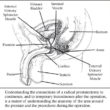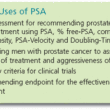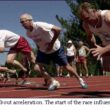Body Roundness Index (BRI), possibly a new measure for estimating mortality risk
Obesity is a global epidemic and contributes to increasing mortality rates. Obesity is one of the top five risk factors for mortality and was associated with approximately 5 million deaths worldwide in 2019.
associated with approximately 5 million deaths worldwide in 2019.
Generally, obesity is determined by body mass index (BMI: calculated as weight in kilograms divided by height in meters squared). Individuals can have the same BMI and have very different fat distribution and body composition. With extensive investigation of body composition, more attention has been paid to the association between visceral obesity and mortality. Visceral fat is belly fat found deep within your abdominal cavity. It surrounds important organs, including the stomach, liver and intestines. It differs from subcutaneous fat, which is fat just below your skin. Visceral fat is more dangerous to health. Some studies show if you have a potbelly—or are more “apple-shaped” than “pear-shaped” you may have more visceral fat.
To better express fat distribution, anewer measure, Body Roundness Index (BRI,) was devised. To calculate BRI, models based on human body shape designed to calculate body roundness and to estimate visceral fat and total body fat percentages were developed. Besides height and weight, BRI considers waist circumference and thus can give a more comprehensive picture of visceral fat distribution. BRI was found to be superior over other indicators in estimating the risk for cardiometabolic disease, kidney disease, and cancer. However, there is a lack of national data on the association between BRI and mortality, and no study has been conducted among the US general population.
This study aimed to examine a nationally representative US population sample from 1999 to 2018 and to examine the association between BRI and mortality. Data from approximately 33,000 US adults ≥ 20 years old was extracted from the National Health and Nutrition Examination Survey over 5 years. Mean BRI increased gradually, especially among women, elderly individuals, and individuals who identified as Mexican American. There was a U-shaped association between BRI and all-cause mortality for adults with BRI less than 3.4 and for those with BRI of 6.9 or greater compared with those in the middle 20% of BRI from 4.5 to 5.5.
These findings need additional validation but could provide evidence for the use of BRI as a noninvasive screening tool for mortality risk estimation.
JAMA Netw Open. 2024;7(6):e2415051. doi:10.1001/jamanetworkopen.2024.15051





















